Sea Lettuce / All Year Round / Edible
Other Common Names:
Sea Salad
Latin Name:
Ulva lactuca
Harvest Season:
Often to be found washed up in the rock pools, sometimes you will be lucky enough to come upon a garden of sea lettuce growing altogether.
Late spring to late Autumn tends to be the time during which it is most abundant, but it can be found all year around.
Take fronds that look fresh and vibrant green – you will often see white or yellow material with the same texture as sea lettuce which is simply sun-bleached.
Amazingly Sea Lettuce can keep living even when detached from the rocks so this is one that, with caution, we can pick detached from the rocks.
Habitat:
Found growing on rocks and in sandy rockpools. It prefers sheltered areas.
Range and Distributions:
A very commonly found plant in the UK and Ireland, with recordings of it across western Europe.
Conservation Considerations:
This is a very common seaweed, which is capable of surviving where other species cannot, such as in highly polluted areas. If there is a higher than usual amount of sea lettuce it may be an indication that the area is polluted. Be aware of this when harvesting.
Physical Characteristics:
This seaweed literally looks like lettuce leaves in the sea. The fronds are green, translucent and quite touch, and they grow in little florets.
They tend to be about palm sized, but can grow to 30cm across.
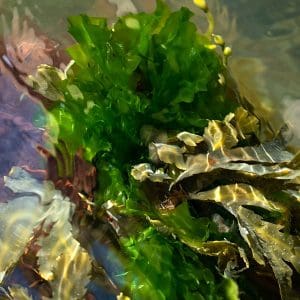
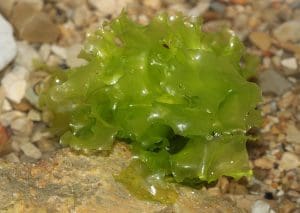
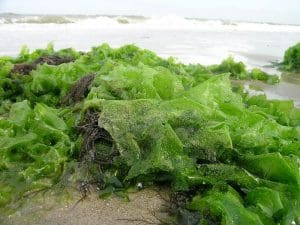
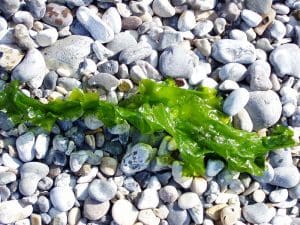
Could be Confused with, and Other Safety Notes:
It is a close relative of gutweed/mermaid’s hair, which has small green threads instead of wide fronds. Sometimes a sun-bleached piece of laver may appear greenish, but it will not have the curly edges associated with sea lettuce.
Sea lettuce likes living in polluted areas, so can accumulate heavy metals and other chemicals.
As with all seaweeds, a very high iodine content means that those with thyroid issues or taking thyroid medication should take great care if increasing their seaweed intake, letting their healthcare provider know.
Edible Uses:
As the name suggests, this is a great addition to salads. It is very common and grows throughout the year, so is a great one to include in your diet on a regular – but moderate – basis.
It is wonderful made into crisps due to its thin texture, and can be used as a vegetable in many dishes.
You could dry and powder it and experiment with using it as a thickener for soups, stews or even creative ice creams.
Medicinal Uses:
As with all seaweeds, sea spaghetti is very high in minerals and salts due to needing to retain enough water in a very saline environment. This makes it a wonderful tonic food, important in the maintenance of a thriving nervous, immune and just about every other body system.
Consume in moderation – see the safety section above. Clinically (by medical herbalists), seaweeds are often used for skin and skeletal issues.
Extra Points, Tips and Fun Facts:
If the area is sheltered, sea lettuce can occasionally continue to grow in floating rafts if it has become detached from its substrate.



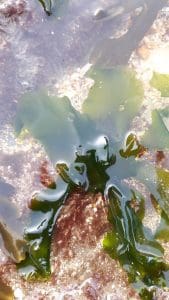



Leave a Reply
You must be logged in to post a comment.